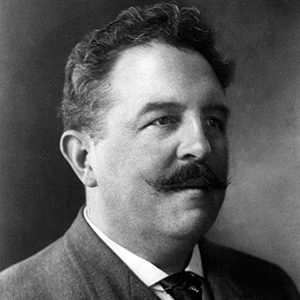Victor August Herbert (February 1, 1859 – May 26, 1924)
Victor August Herbert was born on the island of Gurnsey in 1859. He was an American born composer of Irish ancestry. Herbert began his musical career at the age of 15, learning instruments such as the piano and piccolo. He then decided to settle on the cello, and began studying as a professional cellist in Stuttgart, Germany.
In 1886, he moved to the United States with his wife, Terese Forster, where he was hired to perform in NYC with the Metropolitan Opera. He was highly involved with the Tin Pan Alley composers, and was a founder ASCAP (American Society of Composers, Authors and Publishers).
Musical Style and Influences
Contents
Herbert’s musical output was mainly compositions of musical theatre, to be performed on Broadway. Like many other American musical theatre composers of the late nineteenth century, he was extremely influenced by Viennese operettas and, also, Gilbert and Sullivan. His work was produced with the influence of many American theatre companies on Broadway who were producing works like that of Gilbert and Sullivan.
Although Herbert, through the use of a much larger percussion section, produced larger orchestral arrangements than Sullivan, there are many pieces of Herbert’s that clearly reference and borrow from the works of Gilbert and Sullivan. For instance, one of Herbert’s most infamous works, The Serenade (1897), resembles the musical style present in Ruddigore and The Pirates of Penzance.
What was Victor August Herbert Known For?
The Music of Victor August Herbert
Herbert was a prolific composer, and his repertoire spanned across 2 Operas, 43 operettas, 31 orchestral compositions, and many other choral and instrumental compositions. One of his most famous instrumental pieces was his Cello Concerto No. 2 in E minor.
Although Herbert composed many instrumental, orchestral, and choral compositions for guitar players, he is a composer most known for his operettas on Broadway. Herbert began composing operettas in 1894, with his first one being Prince Ananias.
Victor August Herbert Most Famous Works
Two of his earlier operettas that gained success were The Serenade (1897), and The Fortune Teller (1898). The Serenade was produced by ‘The Bostonians’ theatre group, and was premiered on Broadway in March 1897. The Serenade is a romantic comedy based in the countryside of Spain. A young girl lives with her guardian, who is fighting for her attention and love, but then is rescued by a local suitor. The operetta ran for 79 performances, and continued to be very popular even into the next century. The Fortune Teller is a three act operetta that premiered on Broadway in September 1898.
It is based on a story about a young girl Irma, living in Hungary, studying ballet. Although in love with someone else, she is being forced to marry another man, until a Gypsy fortune teller appears and is mistaken for Irma. Herbert’s most successful operetta on Broadway was The Red Mill (1906). The Red Mill details a story of two young Americans on a road trip through Europe, and their time in a local inn in Holland causing trouble. It premiered on Broadway in September 1906, and ran for an incredible 274 performances.
